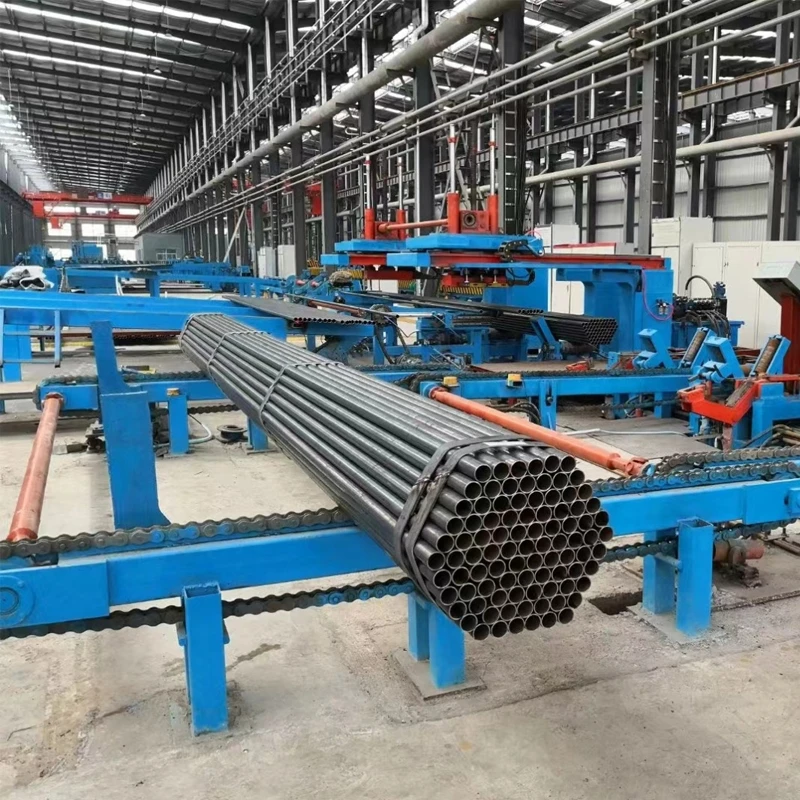roll forming products
The Evolution and Applications of Roll Forming Products
Roll forming is a continuous bending operation in which long strips of metal are gradually processed through a series of rollers to create a uniform cross-section profile. This manufacturing technique has gained significant traction over the years due to its efficiency, precision, and ability to produce complex shapes without the need for extensive tooling changes. Roll forming products find applications across various industries, including construction, automotive, appliances, and more. This article will delve into the intricacies of roll forming, its benefits, and its diverse applications.
The Roll Forming Process
The roll forming process involves feeding a metal strip through a series of rollers that reshape it into the desired profile. Each roller applies a specific amount of pressure, gradually bending the metal to the correct angle. The precision of this process is crucial; as the material moves through the rollers, it must maintain its characteristics without being overly stressed or deformed. Materials commonly used in roll forming include steel, aluminum, and other metals, which can be customized in terms of thickness and width according to the required specifications.
The versatility of the roll forming process allows for the production of a wide range of profiles, from simple shapes like channels and angles to more complex designs like Z-sections, U-channels, and even custom profiles tailored to specific needs. This flexibility is one of the key advantages of roll forming, making it a preferred choice for manufacturers who require high volumes of consistent and precise products.
Benefits of Roll Forming
1. Efficiency Roll forming is a continuous process, which means that once the rollers are set up, production can proceed without interruption. This leads to faster manufacturing times, reduced labor costs, and lower overall production costs compared to other forming methods.
2. Material Utilization The roll forming process minimizes waste by using a continuous strip of material. Unlike other methods that require cutting the material into blanks before forming, roll forming allows manufacturers to utilize the full width of the strip, resulting in better material yield.
3. Consistency and Precision Roll forming produces highly uniform products. The process's ability to maintain tight tolerances ensures that each piece meets the same specifications, which is vital for applications where precise fit and finish are required.
roll forming products

4. Strength and Durability The cold-forming process used in roll forming increases the yield strength of metals, making the products stronger and more durable. This is particularly advantageous in construction and industrial applications where structural integrity is critical.
Applications of Roll Forming Products
Roll forming products are utilized across a wide range of industries, highlighting their versatility and importance. Here are just a few key applications
1. Construction Roll-formed products are commonly used in the construction industry for framing systems, roof trusses, and metal siding. These components benefit from the strength and durability of the roll-formed profiles while providing ease of installation and aesthetic appeal.
2. Automotive The automotive industry relies on roll forming for various structural and aesthetic components, including car frames, interior supports, and trim pieces. The ability to produce lightweight yet sturdy components is crucial for enhancing fuel efficiency and overall vehicle performance.
3. Appliances Many household appliances, such as refrigerators and washing machines, utilize roll-formed metal parts. This includes inner frames, panels, and support structures, which require precision and consistency to ensure proper functionality and durability.
4. HVAC Systems Roll forming is also prominent in the manufacturing of ductwork and other components for heating, ventilation, and air conditioning systems. These systems require products that can withstand different environmental conditions while maintaining high efficiency.
Conclusion
As technology advances and industries evolve, the role of roll forming products will only continue to grow. With its inherent advantages of efficiency, material utilization, and durability, roll forming stands out as a crucial manufacturing process in various sectors. The ability to create customized profiles on a large scale, combined with the increasing demand for sustainable practices, positions roll forming as a forward-looking solution in modern manufacturing. As industries seek innovative ways to enhance their products and processes, roll forming will undoubtedly remain a significant player in the manufacturing landscape.
-
High Frequency Straight Seam Welded Pipe Production Line-BzZhou Xinghua Machinery Equipment Manufacturing Co., LTD.|Precision Welding, High EfficiencyNewsJul.30,2025
-
High Frequency Straight Seam Welded Pipe Production Line|BzZhou Xinghua|Precision Welding&EfficiencyNewsJul.30,2025
-
High Frequency Straight Seam Welded Pipe Production Line - BzZhou Xinghua|Precision Engineering&EfficiencyNewsJul.30,2025
-
High-Frequency Straight Seam Welded Pipe Production Line-BzZhou Xinghua Machinery Equipment Manufacturing Co., LTD.NewsJul.30,2025
-
High-Frequency Straight Seam Welded Pipe Production Line-BzZhou Xinghua Machinery Equipment Manufacturing Co., LTD.|Precision Manufacturing, High EfficiencyNewsJul.30,2025
-
High Frequency Straight Seam Welded Pipe Production Line-BzZhou Xinghua Machinery Equipment Manufacturing Co., LTD.|Precision Steel Pipe Manufacturing&Industrial EfficiencyNewsJul.29,2025


